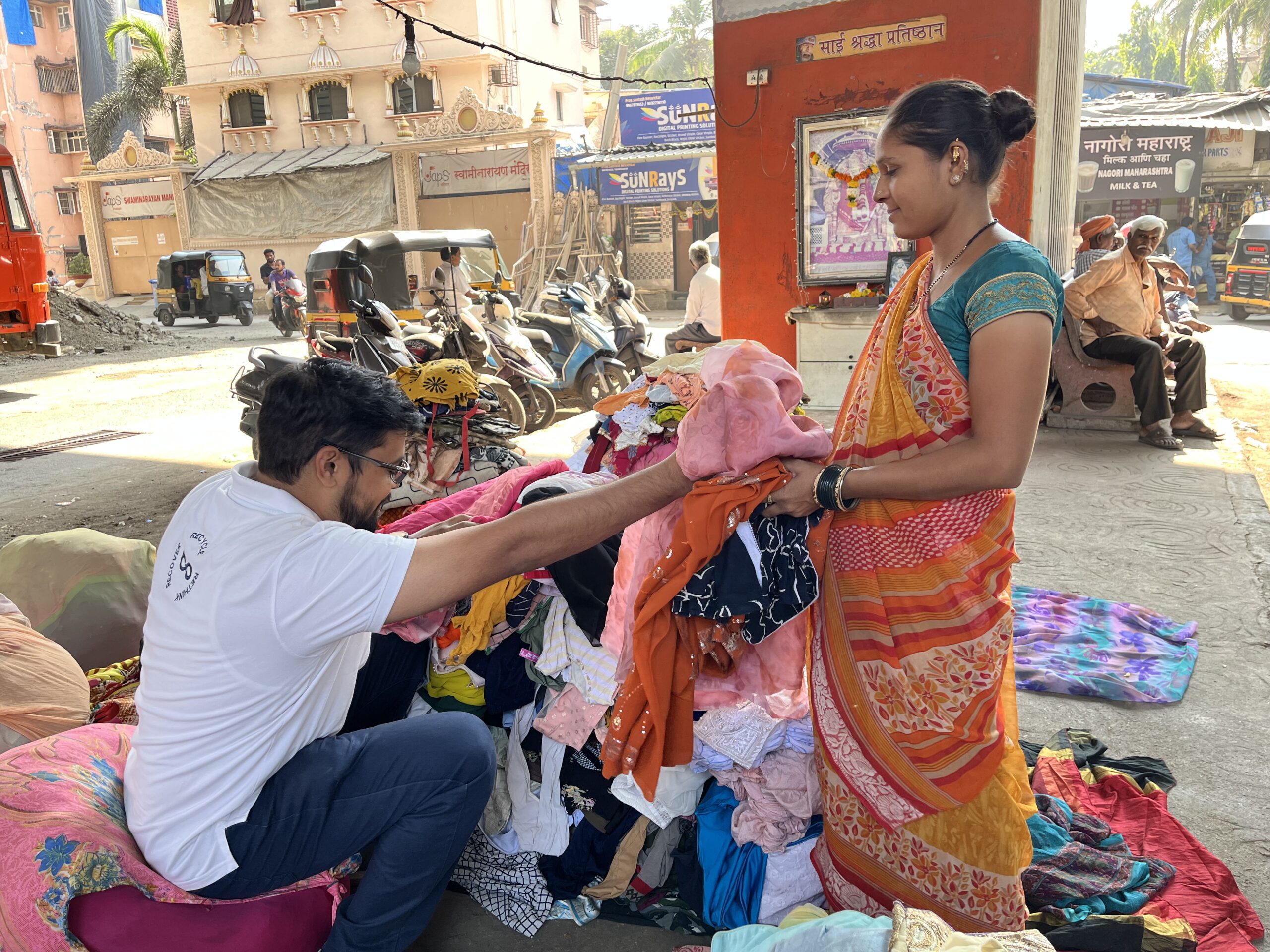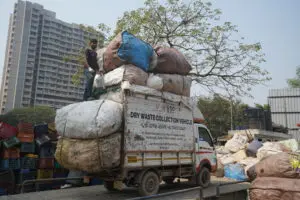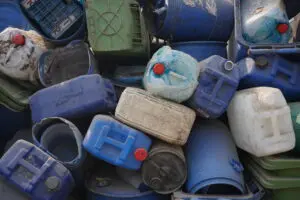The textile and apparel industry is a key pillar of India’s economy. However, the same sector also produces large volumes of waste during manufacturing. Every stage of production, from spinning and dyeing to cutting and finishing, creates fabric scraps, sludge, and chemical residues. Much of this waste still ends up in landfills or incinerators.
With global brands setting stricter sustainability targets and the Indian government tightening environmental norms, the need for structured and responsible waste management has never been greater. Effective textile waste management in India is now central to achieving both business competitiveness and environmental responsibility.
As a waste management organization, we have seen that real progress happens when factories adopt a practical and systematic approach. Below are the best practices that can help reduce waste and environmental impact while improving factory efficiency.
1. Start with a Comprehensive Waste Audit
Before implementing solutions, every factory must understand the scale and nature of its waste. A detailed audit identifies where waste is being generated and where losses can be reduced.
The audit should cover:
- Fabric cutting and production scraps
- Dyeing residues and effluents
- Sludge from treatment plants
- Packaging and operational waste
Collecting this data provides a clear baseline for setting reduction goals and designing recovery systems that are measurable and effective.
2. Segregate Waste at the Source
Segregation is the foundation of efficient waste management. Mixed waste is difficult to recycle, while properly separated materials retain value.
Factories should set up designated, colour-coded bins and label each category of waste clearly. Workers should be trained to separate cotton, polyester, blends, and other materials immediately after use.
Simple segregation practices can reduce contamination, increase recycling rates, and cut overall disposal costs.
3. Improve Efficiency on the Production Floor
Reducing waste during production is the most sustainable and cost-effective solution. Many textile factories can lower fabric waste by 10 to 15 percent through process optimisation alone.
Key actions include:
- Using digital pattern-making and automated cutting systems to reduce offcuts
- Monitoring machine calibration and maintenance to avoid material damage
- Managing dyeing and finishing operations to minimise overuse of chemicals and water
- Reducing excess inventory and sample production
Lean manufacturing principles not only reduce waste but also improve workflow, efficiency, and profitability.
4. Reuse and Repurpose Fabric Waste
Factories can turn their pre-consumer waste into new products or raw materials. Clean, unused scraps can be repurposed for practical uses rather than discarded.
Some effective reuse options include:
- Making accessories, linings, or cleaning rags from offcuts
- Using shredded textile waste as filling for upholstery or insulation
- Donating surplus materials to local enterprises that upcycle fabrics into handicrafts or home products
By finding new uses for waste, factories can reduce their environmental footprint and create additional income streams.
5. Partner with Certified Textile Recyclers
When internal reuse is not possible, partnering with authorised recyclers is the next step. Professional recyclers can convert textile waste into new yarns, fibres, or felt materials suitable for manufacturing again.
Factories should verify that recyclers:
- Hold valid environmental certifications
- Operate within state and national pollution control norms
- Provide documented proof of recycling and waste diversion
At ReCircle, we connect factories with verified recycling partners and offer transparent tracking to ensure that waste is processed responsibly and traceably.
6. Manage Water and Chemical Waste Responsibly
Textile dyeing and finishing generate large volumes of wastewater and chemical residues. Proper treatment of this waste is vital for both environmental protection and regulatory compliance.
Factories should invest in:
- Effluent Treatment Plants (ETPs) to remove contaminants before discharge
- Zero Liquid Discharge (ZLD) systems that recycle treated water for reuse
- Routine water testing and proper sludge disposal
- Adoption of eco-friendly dyes and low-impact chemicals
Responsible management of water and chemical waste helps conserve natural resources and maintains community trust around manufacturing zones.
7. Build Employee Awareness and Accountability
A successful waste management system depends on the people who implement it. Employees at every level need to understand the importance of proper waste handling.
Factories can conduct short training sessions, set up signage in production areas, and create internal recognition programmes for teams that meet waste reduction goals. When workers understand that every kilogram of waste matters, they take ownership of sustainable practices.
8. Design Products with Recycling in Mind
True waste reduction begins at the design stage. Factories and brands can work together to make textiles easier to recycle by focusing on circular design principles.
Consider these actions:
- Use single-fibre fabrics where possible, instead of complex blends
- Avoid unnecessary coatings or trims that hinder recycling
- Choose dyes and finishes that are compatible with recycling technologies
Designing for recyclability helps ensure that materials can return to the production cycle instead of ending up as landfill waste.
9. Measure, Report, and Improve Continuously
Waste management should be seen as a long-term system that evolves with the factory’s operations. Tracking key indicators helps maintain progress.
Factories should measure:
- The quantity of waste generated per production cycle
- The percentage of waste reused or recycled
- The reduction in water and chemical usage over time
Regular reporting not only supports compliance but also builds confidence with buyers, investors, and employees. Continuous improvement keeps the factory aligned with best practices and future-ready.
Conclusion
The path to sustainable textile manufacturing is built on discipline, data, and design. By applying these best practices, factories can make measurable progress toward reducing waste, saving resources, and operating responsibly.
Strong textile waste management in India is now a competitive advantage. It helps manufacturers meet export standards, comply with national regulations, and strengthen their long-term sustainability credentials.
At ReCircle, we help factories put these practices into action. Through our collection networks, certified recycling partners, we provide the structure and visibility needed to manage textile waste efficiently and responsibly.
Every factory has the power to turn waste into value. With the right systems, commitment, and partnerships, India’s textile industry can lead the way in creating a truly circular production model that benefits both the economy and the environment.
Frequently Asked Questions (FAQs)
Textile waste management in India involves responsibly collecting, treating, recycling, and disposing of textile waste generated during manufacturing and after consumer use. It is important because it reduces pollution, conserves resources, and helps the industry meet sustainability standards and support a circular economy.
Factories produce several types of waste, including:
• Pre-consumer waste such as fabric offcuts, yarn ends, and rejected materials.
Identifying each type of waste is the first step towards better management and recycling.
Factories can reduce waste by improving production efficiency and implementing lean manufacturing techniques. This includes:
• Using digital pattern-making and automated cutting machines to minimise offcuts
• Training workers to handle materials carefully
• Reducing overproduction and sample waste
• Monitoring chemical use and machine calibration regularly
These actions help prevent waste before it occurs.
Certified recyclers ensure that textile waste is processed responsibly and reintroduced into the value chain. They convert waste materials into new yarns, fibres, or industrial fabrics. Partnering with authorised recyclers helps factories meet environmental regulations and verify waste diversion through proper documentation. Organisations like ReCircle connect factories with verified recycling partners and provide digital tracking for complete transparency.
Digital platforms such as ClimaOne, powered by ReCircle, help factories monitor and manage waste more effectively. These systems track waste generation, recycling rates, and compliance data in real time. Technology also helps automate reporting, identify inefficiencies, and improve traceability across the supply chain, which is increasingly required by global brands and regulators.
To manage water and chemical waste responsibly, factories should:
• Install Effluent Treatment Plants (ETPs) for wastewater purification
• Implement Zero Liquid Discharge (ZLD) systems to recycle water
• Use low-impact dyes and eco-friendly chemicals
• Conduct regular testing and maintain records of water discharge
These measures protect local ecosystems and ensure compliance with environmental norms.
Factories can support a circular economy by designing products for recyclability, segregating waste properly, and partnering with technology-led recycling platforms. Reusing fabric scraps, adopting sustainable design principles, and integrating digital waste tracking systems are key steps. With the right strategy and collaboration, textile waste management in India can transform waste into valuable resources while reducing the industry’s environmental impact.




